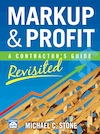A good payment schedule keeps you paid for the work you are doing. If you’re still using a 1/3, 1/3 and 1/3 payment schedule, you are financing most of the job out of your pocket. And you are at risk of not getting paid for all your work.
Some states have laws dictating payment terms on construction contracts. Like most laws written by politicians, the laws are written to deal with the effects of a problem and not the cause. The cause is dishonest contractors. A customer paying ahead of work being done is not a problem with good, honest contractors. Front loaded payment schedules are only a problem when the dishonest people that get into this business don’t uphold their end of the contract.
Put together a contract and a payment schedule that is a win-win scenario depending on the size of the job to be done. For small jobs, say up to $2,500, the payment schedule should be a down payment of 20% to 40% of the sales price, with at least one, preferably two progress payments of 20% to 30% and a final payment, due on job completion of about 2%. The final payment, depending on circumstances can drift up to maybe 5% but never more than that.
Like what you’re reading? Purchase
Markup & Profit: A Contractor’s Guide Revisited. The basics of running a profitable construction business. Softcover, eBook, and audiobook formats
Order it Here
Depending on the state you live in, you can adjust your payment schedule to meet your state laws. In California, where they are limited to $1,000 or 10% of the sales price of a job, I would get a down payment at the signing of the contract, a material purchase deposit at some point before you get more than just a few days into the job and then continue on with the progress payments.
For larger jobs, get a down payment, a progress payment at least every two weeks and again, the final payment at no more than 2% of the sales price of the job. On larger jobs you should have no less than 4 payments, but again this depends on the length of the job. A good rule of thumb is to be paid every other Thursday or Friday until the job is complete. Be sure you have solid punch list language in your contract so there isn’t any misunderstanding when the job is complete and you are to receive your final payment.
The smart contractor gets smaller payments and more of them. That eliminates cash flow problems and helps your business stay on solid ground.
The knowledge and experience Michael Stone gained in his 60+ years in construction has helped thousands of contractors improve their businesses and their lives. He is the author of the books Markup & Profit Revisited, Profitable Sales, and Estimating Construction Profitably, and is available for one-on-one consultations.


 wpDiscuz
wpDiscuz